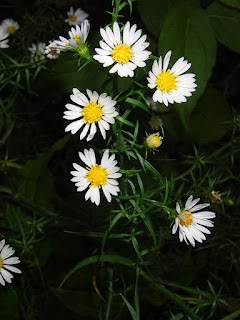This scrappy little species is common throughout the landscape. It is a component of high-quality prairies and savannas, rubbing elbows with the most conservative of prairie plants, but can also be found duking it out with the weeds on roadsides, old fields and urban waste areas. It often 'just shows up' in prairie plantings and formal gardens alike. In fact, I have about a dozen in my yard and I never planted a single one of them. It is often considered a weed, and the overall structure of the plant is relatively unattractive with a hairy, spreading stem and long, skinny leaves. But it is a great source of pollen and nectar for butterflies and bees, and once it starts blooming its bright flowers can cheer up any garden. Plus, it blooms from late August all the way until early November. Another great attribute is that it never spreads aggressively like its distant cousin Canada goldenrod, which also tends to "just show up" in a garden or prairie.
So keep an eye out for hairy aster this fall. Chances are, if you see a white aster in full sun or light shade, outside of a wetland or remnant prairie, this is it. You may not know every aster species in our area, but you can be pretty confident that just about every one you will see on a day-to-day basis will be this exuberant species.




No comments:
Post a Comment